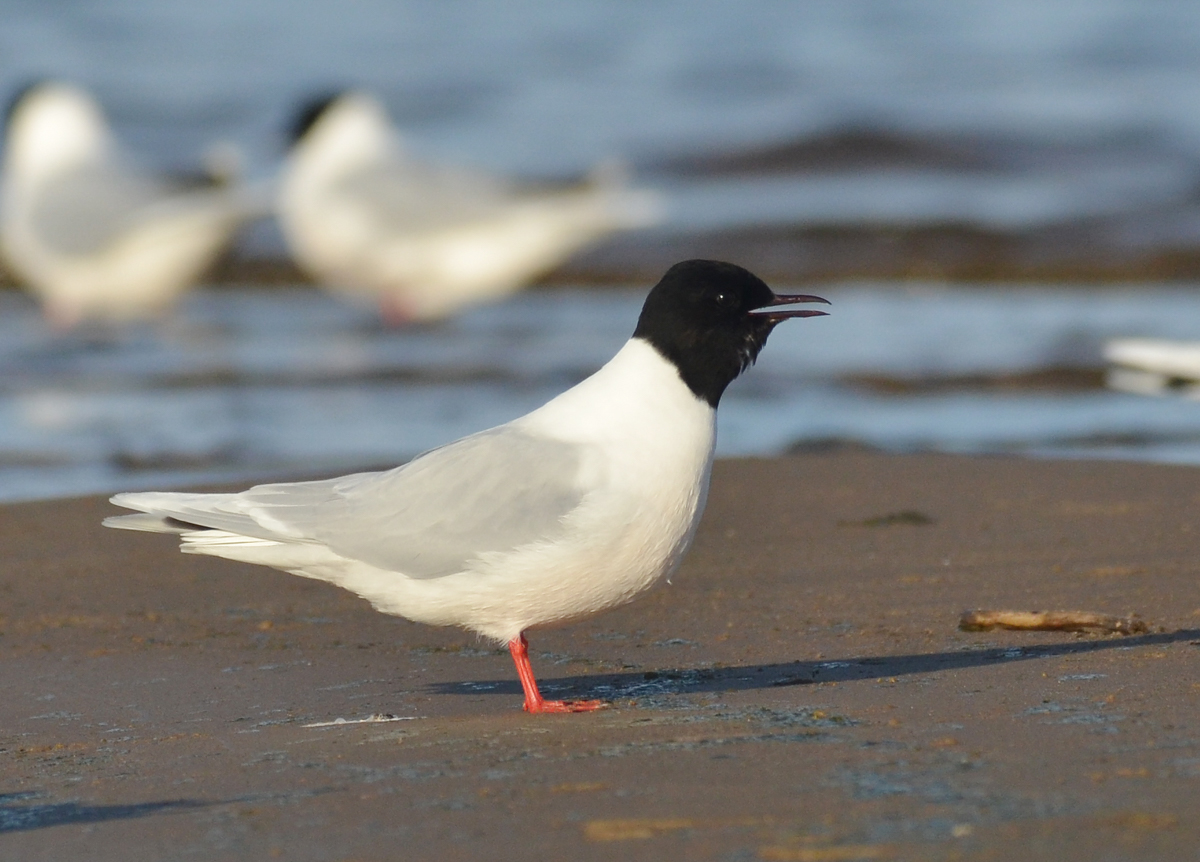
Photo © Papchinskaya
The little gull (Hydrocoloeus minutus), is a species of gull belonging to the family Laridae which is mainly found in the Palearctic with some colonies in North America. It breeds on freshwaters and spends winters at sea. It is the smallest species of gull in the world and the only species in the monospecific genus Hydrocoloeus.
The little gull was first formally described as Larus minutus in 1776 by the Dutch ornithologist Peter Simon Pallas with its type locality given as Berezovo, Tobolsk in Siberia. In 1829, Johann Jakob Kaup proposed the genus Hydrocoloeus for this species and George Robert Gray formally designated Larus minutus as the type species of the genus. Hydrocoloeus minutus is the binomial accepted for this species and it is classified in the family Laridae, the gulls and terns, within the order Charadriiformes.
The little gull has genus name Hydrocoloeus which is from Ancient Greek hydro, "water", and koloios, a sort of web-footed bird. The specific minutus is Latin for "small".
The little gull has a body length of 24 to 28 cm (9.4 to 11.0 in) and a wing span of 62 to 69 cm (24 to 27 in), making it the smallest gull species in the world. The adults in breeding plumage have a black hood, dark red bill, bright red legs and a rosy flush to the underside. In non-breeding plumage the adults have a black cap and spot on the ear, white underparts, a black bill and the red on the legs is duller. In all plumages the adults have a pale grey back and upperwings with white primaries contrasting with very dark grey underwing. The juveniles have large areas of blackish colour on the back and head and in flight they have a dark "w" pattern on the upperwings with white underwings. By their first winter the head and body are similar to those of an adult but the upperwing pattern is retained. By their second year they have become very similar to the adults but have some black primary feathers.
The little gull has a wide Palearctic distribution breeding from northern Scandinavia and the eastern Baltic Sea to eastern Siberia. They also breed in North America around the Great Lakes. It is a migratory species which winters along the coasts of Europe as far south as the Mediterranean, Black and Caspian Seas. They are uncommon in the western Pacific. In North America they winter along the Atlantic coasts in small numbers, as far south as the Carolinas. In the early 21st Century non-breeding birds have summered in western Europe in increasing numbers and in 2016 they successfully nested for the first time in Great Britain at the Royal Society for the Protection of Birds reserve at Loch of Strathbeg reserve in Aberdeenshire.
The little gull nests in areas of dense vegetation where there are emergent or plants with floating leaves in shallow freshwater bodies, slow-moving rivers, marshes and bogs, occasionally using costal lagoons or other brackish water habitats. When it is migrating this species is coastal but may be found inland in some conditions. They also winter on the coast where there are sand and mud substrates and at river mouths and even out to sea. They may be attracted to sewage outfalls.
The little gull is a migratory species with separate breeding and wintering ranges. They typically arrive at their breeding areas from late-April up to late May and start to move away from the breeding areas from the middle of July. Laying eggs begins in mid-June and they commonly nest among other species of gull and tern to form mixed colonies, although some pairs will nest singly away from colonies. Away from the breeding areas this is a sociable species and feeds and loafs in flocks. These flocks can be very large and may number of thousands of birds if bad weather forces them into sheltered waters. The nests are situated on the ground or on the water, floating on leaves and fixed to emergent vegetation and are spaced at distances of 1 to 1.5 m (3 ft 3 in to 4 ft 11 in) from each other in colonies.
Breeding birds are insectivores and feed on a variety of insects caught on the wing close to the water and in winter the diet is dominated by small fish and marine invertebrates.
Source: Wikipedia